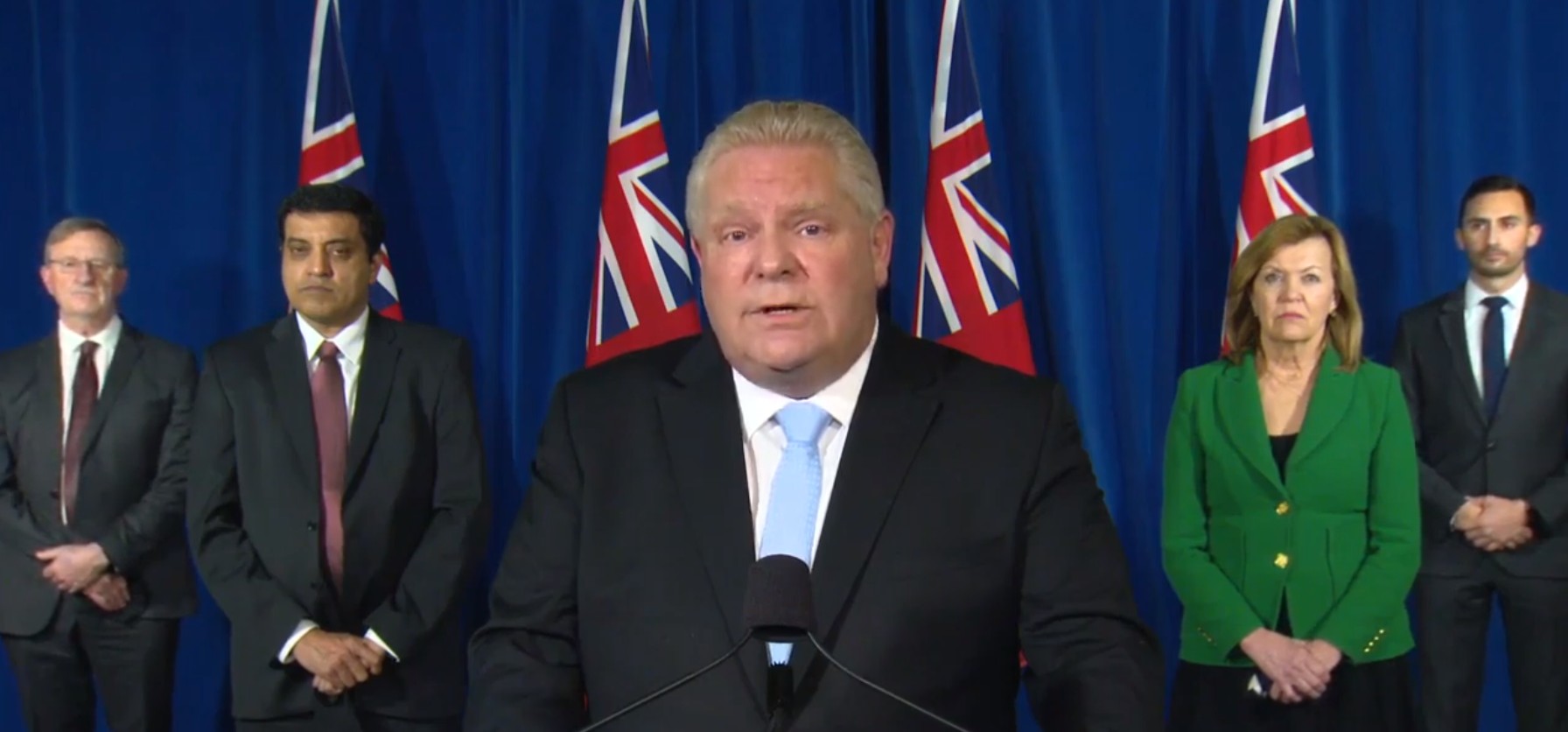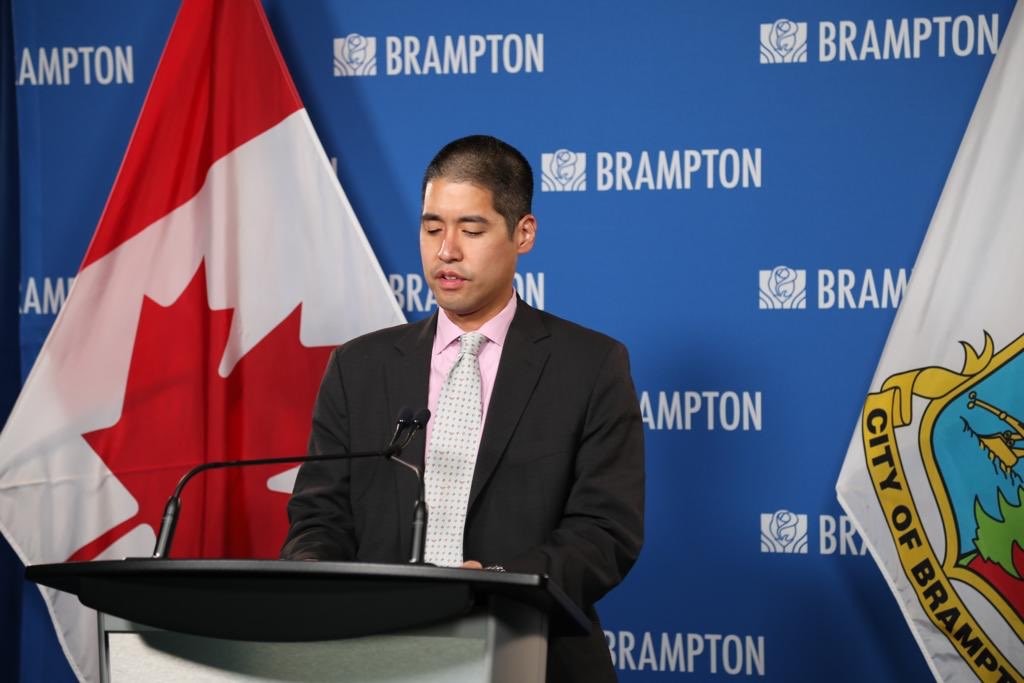
After ‘region hopping’, Ontario residents placed in lockdown and classroom learning will be delayed
In November, lockdown measures were an “emergency brake” to slow Peel’s rapidly increasing viral infection rates. Four weeks later, the brakes are being pulled even harder in this critical phase of the second wave – one that has seen hospitalizations continue to rise. Premier Doug Ford’s government will impose sweeping measures on Boxing Day under a province-wide shutdown.
Beginning on December 26, the shutdown will span two weeks in the province's northern regions, and four weeks – until January 23 – for southern Ontario. Premier Ford announced the latest measures in a press conference Monday afternoon, flanked by his chief medical officer of health, ministers of health and education, and president of the William Osler Health System, which runs Brampton’s hard hit Civic Hospital.
The new restrictions call for remote learning for elementary students until January 11, and secondary students until January 25. Post secondary schools with on-site instruction components will be limited to 10 people per class, with some exemptions available to health and medical training providers.

New lockdown restrictions will see students learning remotely after the holiday break.
Until the shutdown comes into place four days from now, Dr. Lawrence Loh, Peel’s Medical Officer of Health, said residents are urged to stay home except for essential trips.
“I would really encourage people to start living their lives as though we are already in the midst of trying to curtail our contacts and interactions. Ultimately, the message is still the same,” Loh said in an interview.
The Premier said the decision to delay the shutdown until after Christmas gives businesses in those areas not currently in lockdown a chance to prepare. Earlier in the day, a provincial briefing for COVID-19 modelling made the case for shutting down as early as possible.
“If we started on December 21, instead of December 28, it plays out significant reductions in cases under almost any scenario,” said Dr. Adalsteinn Brown, dean of the Dalla Lana School of Public Health at the University of Toronto. For example, if the province had zero-percent case growth and began the shutdown on December 21, it would reduce the total cases by 800 by the end of this month, with a reduction of more than 11,000 total cases by the end of January, said Brown, who is also a co-chair of the provincial government’s science advisory group.
On Monday, of Ontario’s 2,123 new infections, Peel accounted for 480, second to Toronto. It marked the seventh day in a row that Ontario surpassed 2,000 cases.
The last two weeks of epidemiological reports in Peel show the Region’s test positivity rate has dropped to 8.7 percent from 9.9 percent, with a current incidence rate of 186.6 cases per 100,000 residents, down from 203.4. Brampton still has the highest incidence rate by far, at 262.3 cases per 100,000, followed by Mississauga at 139 and Caledon at 130.
These figures are a far cry from the spring. Between May 11 and May 24, Peel’s incidence rate was 59 cases per 100,000 residents. A few months later, in July, acute hospital bed and intensive care unit availability remained in the green, with a 1.6 positivity rate across the Region – well below Ontario’s three-percent threshold. By the first week of October, this shifted to just above the provincial threshold, which indicates whether or not the viral spread is under control, and Brampton’s local positivity rate continued to climb to 9.6 percent, teetering toward double-digits as the second wave swelled.
Though national vaccine rollout is underway, with hospitals in the Trillium Health and William Osler Health systems among the next 17 to receive the Pfizer-BioNTech doses, hospitals are continuing to grapple with a surge of COVID-19 patients.
On December 21, Bella Rago, a registered nurse at Camilla Care Community long-term care home, was the first person at Trillium to receive the COVID-19 vaccine.
Mississauga has seen an 82 percent increase in COVID-19 hospitalizations from November. On December 21, Trillium had 89 COVID-19 patients in hospital, with 27 in critical care. As of December 21, Osler was treating 96 patients for COVID-19, with 17 in critical care.
In the province, ICU occupancy is on track to surpass 300 beds in the next 10 days, with worst-case projections showing occupancy above 1,500 beds by mid-January, according to provincial data. Based on results in countries such as France and Australia, modelling “hard lockdowns” of four to six weeks shows Ontario could see case counts fall to fewer than 1,000 per day.
Under the new restrictions, occupancy limits of 50 percent capacity are in place for businesses that sell groceries, and discount and big-box retailers which also sell food are to cap shoppers at 25 percent capacity. Outdoor gatherings will be limited to 10 people, and no indoor events are allowed except with members of the same household. Weddings, funerals and religious events that can accommodate physical distancing are also capped at 10 people, indoors and outdoors.
“I support Premier Ford’s decision on a Provincewide shutdown. While I and many others in Mississauga were hoping that we would be moved out of lockdown by the New Year, this is regrettably not the case,” Mississauga Mayor Bonnie Crombie said in a statement on Monday. Last Wednesday, she urged the province to place the entire GTHA in a lockdown after cell phone location data showed “region-hopping” had become more common since Peel and Toronto were singled out by the Province in November when they were shut down ahead of the rest of Ontario.
The provincial phone data, shared with Peel, showed Brampton was second only to Windsor with the highest number of residents who crossed into the United States in the last week, Dr. Loh said. But he was quick to contextualize the data. He attributed the numbers to the city’s prominent trucking and distribution sector. “The one thing that was missing from the provincial announcement… is support for our essential workers, worker protections, paid sick days. We know that these are some of the big pieces that are also continuing to drive transition to our community.”

Peel's medical officer of health Dr. Lawrence Loh
He added that anecdotally, public health staff are aware of residents organizing buses out of “grey-lockdown” zones and into areas with fewer restrictions. To curb movement between regions and confront rising local infection rates, York was put into lockdown about two weeks ago, but Halton remains in the “red-control” level of the Province’s framework.
The Province is also introducing a small business support grant of between $10,000 and $20,000 for entrepreneurs who can show a 20 percent revenue decline between April 2019 and April 2020, and must close shop or restrict services due to the shutdown.
Email: [email protected]
Twitter: @LaVjosa
COVID-19 is impacting all Canadians. At a time when vital public information is needed by everyone, The Pointer has taken down our paywall on all stories relating to the pandemic and those of public interest to ensure every resident of Brampton and Mississauga has access to the facts. For those who are able, we encourage you to consider a subscription. This will help us report on important public interest issues the community needs to know about now more than ever. You can register for a 30-day free trial HERE. Thereafter, The Pointer will charge $10 a month and you can cancel any time right on the website. Thank you.
Submit a correction about this story


